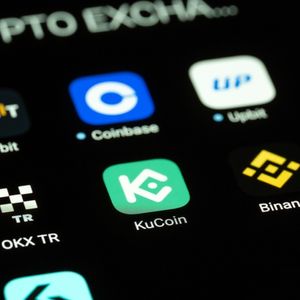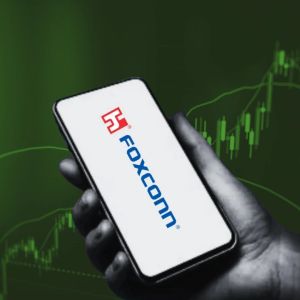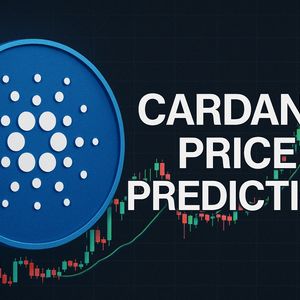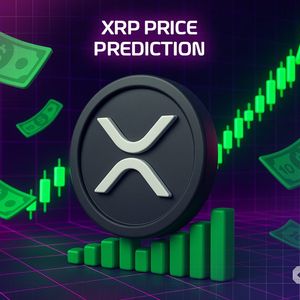2025-10-05 13:35:00
VanEck Crypto Monthly Recap For September 2025
Summary Most tokens finished September lower, with 23 of 35 major assets declining as late-month selloffs erased earlier gains. Entities like Bitmine and MicroStrategy drive total DAT assets to approximately $135B, although sustainability depends on maintaining volatility-driven funding. Aster and Hyperliquid captured nearly one-third (32%) of all blockchain fees as perpetual futures trading volumes jumped (+30%) MoM, powered by Aster’s token launch and incentive farming.. September brought familiar weakness across crypto markets with token declines, lower blockchain revenues from fading volatility, and renewed focus on Solana’s Alpenglow upgrade, Ethereum’s Fusaka milestone, and enterprise blockchain revival. Please note that VanEck may have a position(s) in the digital asset(s) described below. Price Returns September (%) YTD (%) MarketVector Global Digital Assets Equity Index 21.77 50.04 Coinbase 10.82 35.92 Nasdaq Index 5.59 17.33 Bitcoin ( BTC-USD ) 5.18 21.70 S&P 500 Index 3.51 13.70 MarketVector Smart Contract Leaders Index -0.34 1.69 MarketVector Meme Coin Index -0.88 -47.85 MarketVector Infrastructure Application Leaders Index -1.09 -38.15 Ethereum ( ETH-USD ) -4.94 23.49 MarketVector Decentralized Finance Leaders Index -12.43 -40.34 Source: Bloomberg as of 9/30/2025. Index performance is not representative of fund performance. It is not possible to invest directly in an index. Past performance is no guarantee of future results. Not intended as a recommendation to buy or sell any securities named herein. MarketVector Smart Contract Leaders Index (MVSCLE) — 1-Year Performance Source: Bloomberg as of 9/29/2025. Index performance is not representative of fund performance. It is not possible to invest directly in an index. Past performance is no guarantee of future results. Not intended as a recommendation to buy or sell any securities named herein. September was a disappointing month for most cryptocurrencies as the selloff in the waning days of the month dragged most tokens underwater. Out of the 35 major native blockchain tokens we track, 23 of them experienced a decline in value in September. BTC was positive (+5%), ETH was down (-5%), and the performance of the alt-token complex was mixed, with the MarketVector Smart Contract Leaders Index (MVSCLE) flat (0%). Thematically, stablecoins once again seized the narrative with Plasma’s ((XPL)) $10B chain launch that included a $1.25B+ airdrop to users of the platform as well as Binance’s BNB token stakers. This, alongside the emergence of Binance’s Perps exchange, called Aster ( ASTER-USD ), contributed to BNB’s (+16%) outperformance on the month. The seasoned crypto investor is not surprised by September’s weak performance. Since 2016, across the 35 tokens we track, September has delivered negative returns (62%) of the time. While both BTC and ETH recorded positive returns in September in each of the last two years, looking back further in history reveals a typical weakness. BTC posted negative results in six consecutive Septembers prior, while ETH was negative in five of the previous six. On average, since 2016, BTC has returned (–3%) in September, while ETH has lost (–7%). Onchain, spot crypto decentralized exchange (DEX) volumes were roughly equal to those in August at approximately $365B. However, the trading volume of perpetual futures (perps) on DEXes was (+30%), and this surge was almost entirely due to the trading on BNB’s Aster, which we cover later in this write-up. Absent the explosion in “farming” volumes on Aster, perp volumes were actually down (-15%) month-over-month. Blockchain Revenues Decline due to Reduced Volatility One of the most notable onchain developments in September was the broad decline in blockchain revenues, which fell (-16%) MoM. Among major networks, Ethereum’s revenue decreased by (-6%), Solana’s ( SOL-USD ) by (-11%), and Tron’s by a striking (-37%). This contraction was largely driven by reduced crypto market volatility, evidenced by volatility declines of SOL (-16%), ETH (-40%), and BTC (-26%) MoM. With reduced volatility for digital assets, there are fewer arbitrage opportunities to compel traders to pay high priority fees. Tron’s sharp drop, however, was more related to the onchain governance Proposal #104, which more than halved transaction fees. Volatility Decreases Across Most Projects Source: Artemis XYZ as of 9/29/2025. Index performance is not representative of fund performance. It is not possible to invest directly in an index. Past performance is no guarantee of future results. Not intended as a recommendation to buy or sell any securities named herein. Notable Performance Winners and Laggards for September Winners Mantel (MNT): (+53%) Avalanche ( AVAX-USD ): (+24%) Binance ( BNB-USD ): (+16%) Laggards Polygon (POL) ( MATIC-USD ): (-19%) Arbitrum (ARB): (-17%) Toncoin (TON) ( TONCOIN-USD ): (-14%) Digital Asset Treasury ((DAT)) Update Thematically, September 2025 was characterized by the continued growth of digital asset treasuries (DATs), which swelled to hold around ~$135B in assets (~53% in MSTR). DATs are entities that utilize financialization to increase common share exposure to digital assets. Some DAT EVs currently trade at mNAV premiums to the value of their digital asset treasury holdings. We believe this is partly explained by the market assigning a premium to entities that have a credible long-term ability to increase per-share digital asset exposure. To purchase more digital assets, companies often sell securities whose valuations are linked to the underlying volatility of the company’s stock. In order to “reap” the benefits of the volatility of their common shares (and the underlying digital assets), these entities must price the volatility they are selling well below the implied volatility of options. This allows sophisticated market participants to buy relatively cheap volatility (through common shares, convertible debt, or warrant sales) and hedge against relatively expensive options portfolios. These savvy traders then expect the volatility of the two positions to converge over time, enabling a profit on the trade. BNMR Enjoys Almost Twice the Daily Turnover of Other DATs Source: Bloomberg as of 9/29/2025. Past performance is no guarantee of future results. Not intended as a recommendation to buy or sell any securities named herein. One issue that many new DATs are encountering is the lack of deep and liquid markets for the secondary trading of their securities (particularly options). As a result, DATs without a developed options market must offer investors large discounts on volatility. Recently, Bitmine Immersion, the largest ETH DAT with >$11B in ETH holdings, sold common shares priced at $70 (when the stock was trading at $61.39). Alongside these common shares were two attached warrants to purchase additional shares at a higher price. Effectively, Bitmine sold investors common shares in BNMR with two free call options with a strike price of $87.50. Using options math, each of these warrants is worth about $20 on its own. Combined, Bitmine sold a package worth $104.61 ($61.39 + $21.61 + $21.61) for $70. This means BNMR is underpricing volatility by selling warrants at a steep discount, which is quite a caper for the trader who can manage the options risk. Stepping back, BNMR is the most widely traded DAT by nearly a factor of two and still had to underprice its volatility by ~75% to provide enough juice for speculators to buy its securities. Apt investors should take note that these “volatility reactors,” as Saylor calls DATs, necessitate continual volatility to enable further purchase of cryptocurrencies. For almost a decade, cryptocurrency volatility has declined, and if this trend persists, it threatens the ability of DATs to finance more crypto purchases. As speculative zest fades at the same time and more digital asset products become available, mNAV should therefore fade because investors can no longer count on most DATs to expand their treasuries consistently. BTC 30-Day Trailing Volatility Trending Lower Due to Adoption Source: Artemis XYZ as of 9/29/2025. Past performance is no guarantee of future results. Not intended as a recommendation to buy or sell any securities named herein. Another developing narrative is that DATs may actively compress implied volatility by selling options (and by selling warrants) to generate income. Saylor recently confirmed at a conference that Strategy would pursue this approach under circumstances where he could not issue shares due to MSTR mNAV Solana Update (+2%) SOL/ETH Below 1-Year Trendline Source: Artemis XYZ as of 9/29/2025. Past performance is no guarantee of future results. Not intended as a recommendation to buy or sell any securities named herein. The SOL token had a relatively good, but deeply unsatisfying, end to the month after it punched above $250 mid-month before falling below $200 in the span of a week. SOL’s price action was mostly driven by ebullience surrounding the potential SOL ETP and the start of several new SOL-focused digital asset treasuries (DATs). In September, the two major DAT behemoths, Forward ($1.5B) and Helius ($500M), began operations, which translated into increased buying demand for SOL. At the time of writing, it is estimated that Solana DATs hold 2.5% of the total SOL supply, and there are rumors that more SOL DATs may be forming. From the technical development standpoint, Solana opened the month with its validators voting to pass the Alpenglow upgrade by a (98%) margin. Many believe this is the largest upgrade to Solana’s consensus in its history, as it is the first step towards changing many core features of the Solana software. Some of the most monumental impacts include: Faster finality time, dropping from 12s to 150ms Offchain voting on blocks Improved validator economics Simpler, faster network communication mechanisms Higher levels of consensus stability Improved efficiency As a consequence of the Alpenglow upgrade, there have been calls by some developers to increase the capacity of each block on Solana. Each transaction on Solana is quantified by the computing power needed to process it. The measurement of computing power is called “compute units,” and there is a limit to how many compute units a transaction can demand. Additionally, there is a limit on how many compute units an entire block of transactions can contain. Effectively, Solana’s transaction throughput is limited by the number of compute units that can be packed into each block. Already, Solana is on track to increase block capacity by 25% by the end of the year, while Jump’s Firedancer team recently proposed SIMD-0370 to remove Solana’s fixed compute unit block limit entirely. Another, deeper change to Solana’s architecture comes from creating the “P-token” which is intended to replace the current token format called “SPL token.” The SPL tokens are inefficient because they consume a substantial number of compute units when they are transferred or traded. Around 10% of all of Solana’s blockspace (a rough synonym for compute unit capacity of each block) is utilized by SPL token compute units. The “P-token” will reduce the compute needs of tokens by 95%. As a result, Solana can increase its transaction throughput by nearly 10%. In terms of its offering for the current financial system, Solana has been winning market share for products like tokenized stocks. In the past few months, Solana has hosted 60% of the volume on its Chain. At the same time, Solana added $2B worth of stablecoins to its blockchain to bring its total to $14.3B. Enterprise Blockchains Re-Emerge Cryptocurrency is the nexus of cryptography, distributed systems, and economics to create a private money that competes with government-backed fiat. Once Bitcoin proved that decentralized networks could coordinate and transfer value, others began to experiment with building blockchains with fewer technical limitations. Amongst these actors were corporations and foundations dedicated to building chains that solved issues plaguing large companies. While blockchains presented a range of potential applications, the majority of corporate endeavors were exploratory in nature, motivated by a desire to align with perceived trends rather than by serious strategic intent. For example, in 2016, JP Morgan forked Ethereum to create Quorum, a permissioned chain for use by financial institutions, that incorporated smart contracts to speed up asset settlement, enforce repo transactions, and reduce compliance checks in cross-border payments. By 2018, entities such as Walmart and Carrefour were utilizing blockchain to trace the origin of vegetables sold in their stores. Another interesting experiment was HSBC’s Voltron digitizing letters of credit and MineHub, which placed a BHP iron-ore trade on a private blockchain in 2020. In the shipping sector, Tradelens, a collaboration of IBM and Maersk, used IBM’s Fabric distributed ledger to document global shipping data and documentation. The majority of these early projects delivered little more than PR buzz and tax breaks from R&D spending. Most were proof-of-concepts that either lacked a real-world problem to solve or were blocked by regulatory constraints. Many collapsed altogether when their values failed to exceed the necessary moment to launch beyond the gravitational pull of stakeholders wedded to legacy systems. With the latest surge in token prices as well as the pending legislation on stablecoins and digital assets, corporations are once again exploring blockchain use. However, this time appears to be different because there is both legal clarity and encouragement for utilizing blockchain coming from Washington, DC. It appears that this is the “crypto moment” in the same way that 2009 was a “green energy moment” with the ascension of Barack Obama to the presidency. Some of the most eye-catching “enterprise” blockchain projects include: Figure Technologies Provenance is a Cosmos ( ATOM-USD ) blockchain that is used as a ledger of record for HELOCs and, in the future, other asset-backed securities. SWIFT SWIFT is collaborating with 30 financial institutions to create a shared digital ledger that will be interoperable with existing blockchains. Societe Generale Forge is a fully regulated and compliant platform for tokenization and stablecoins, enabling connections to public blockchains and traditional market infrastructure. Stripe Tempo is an Ethereum based network that will become a neutral stablecoin payments network which can be used by agentic AI. Digital Asset Canton, a collaboration between DRW, Tradeweb, and GS, is a privacy-first, settlement network for securities trading and asset exchanges between financial institutions. Circle Arca, Circle’s USDC-focused payments blockchain. OpenAI Worldchain is blockchain created to host the ID system that will distinguish human users from AI users on the internet. Coinbase Base is Coinbase’s ( COIN ) home for DeFi and crypto payments including the likely home of Cloudflare’s AI agentic payment stablecoin NET. Ripple The Ripple ( XRP-USD ) network is creating a settlement system and payments financial entities like the major prime broker Hidden Road. JPMorgan Kinexys Digital Payments network to create programable, cross-chain payments 24/7. Ethereum Update (-2%) ETH traded down slightly (-2%) in September, underperforming BTC’s (+7%) gain after two months of double-digit outperformance in July and August. Daily transactions fell (-8.7%) to 47.2M from the all-time high of 51.7M set in August but remained the second-highest month on record. Similarly, DEX trading volumes fell (-20.3%) to $111.9B from all-time highs of $140.5B set in August, the third-highest month on record behind the previous cycle highs of $118.1B set in June 2021. At $1.74T, stablecoin transfer volumes on Ethereum were also the second highest on record in September, down (-4%) from all-time highs of $1.80T in August, up (+105%) YTD. The Fusaka Upgrade Ethereum’s scaling roadmap is entering its next phase with the planned Fusaka upgrade in December 2025, which will introduce Peer Data Availability Sampling (PeerDAS). PeerDAS helps improve Ethereum’s Layer-2 (L2) blockchain scalability by reducing the data requirements needed by Ethereum validators to verify the L2s. As a result, Fusaka is designed to relieve one of the network’s most pressing bottlenecks: data availability for rollups. Blob Count Reached New Target For The First Time Since The Dencun Upgrade Source: Dune Analytics @hildobby as of 9/29/2025. Past performance is no guarantee of future results. Not intended as a recommendation to buy or sell any securities named herein. The chart above shows that average blob usage has reached the six-blob target for the first time since Dencun went live in March 2025. Dencun initially launched with a conservative cap of three blobs per block, but after developers confirmed network stability, the ceiling was raised to six in May. Since then, L2 rollups have increasingly filled this expanded blob space, demonstrating sustained demand for cheap data availability and marking another milestone in Ethereum’s transition toward rollup-centric scaling. Currently, Coinbase’s Base and Worldcoin’s World Chain represent around 60% of all data submitted by L2s to Ethereum. World Chain and Base Submit 60% of All L2 Data Source: Dune Analytics @hildobby as of 9/30/2025. Past performance is no guarantee of future results. Not intended as a recommendation to buy or sell any securities named herein. Fusaka will allow Ethereum to raise blob capacity further by enabling nodes to validate blocks through probabilistic sampling rather than downloading full blob data. This approach reduces bandwidth and storage demands on validators, making higher blob throughput feasible without undermining security. The roadmap envisions incremental increases in blob targets through “Blob Parameter Only” (BPO) forks, with Fusaka providing the critical technical foundation. That said, PeerDAS introduces complexity, relying on erasure coding and statistical guarantees. Developers are intentionally conservative in their approach, rolling out capacity in phases to minimize the risk of bandwidth spikes or validator stress. The implications of Fusaka are significant. By expanding blob capacity, the upgrade should lower costs for L2 rollups, translating into cheaper transactions for end users. All else equal, this should bring more onchain economic activity into Ethereum’s orbit. While Fusaka may not materially restore L1 fee burns, since L2 adoption has historically cannibalized Ethereum’s mainnet fee revenue, the upgrade reinforces ETH’s role at the center of Ethereum’s broader ecosystem. The chart below highlights this dynamic, showing how declining L1 fee revenues have coincided with rising ETH dilution for non-stakers. Falling L1 Fees Are Driving Net ETH Dilution for Non-Stakers Source: Artemis.xyz as of 9/29/2025. Past performance is no guarantee of future results. Not intended as a recommendation to buy or sell any securities named herein. As more economic activity takes place on L2s due to increased bandwidth and reduced fees, the economic security of Ethereum L1 settlements becomes increasingly important. This enhances ETH’s importance as a store of value and monetary asset, even against the backdrop of a secular decline in L1 fee economics. In other words, investors should be aware that the case for ETH is trending away from its status as a fee-driven yield-bearing asset and instead towards a monetary one. Moreover, as institutional actors like DATs and ETPs continue to accumulate long-term ETH positions to stake for in-kind yield, investors holding unstaked ETH should be aware of their exposure to dilution. The Battle of Perpetual Futures DEXs: Hyperliquid vs. Aster Perpetual DEXs Surge: Aster and Hyperliquid Capture One-Third of Crypto Fee Revenues Source: Artemis.xyz as of 9/29/2025. Past performance is no guarantee of future results. Not intended as a recommendation to buy or sell any securities named herein. Perpetuals are becoming the fastest-growing corner of DeFi, and two names now dominate the conversation: Hyperliquid and Aster. Hyperliquid ( HYPE-USD ) gained (+1.5%) this month, cooling off after being one of the Top 100 crypto’s best performers YTD (+88%). Aster (ASTER), another decentralized exchange specializing in perpetual futures trading, stole the spotlight after launching its ASTER token in September, which is up (+1,667%) since it began trading on September 17th. Beyond price action, both protocols are now among the top fee generators in the crypto space, together accounting for nearly one-third (32%) of all blockchain fee revenues as of late September. Perpetual futures (“perps”) are derivatives that let traders speculate on the price of an asset with leverage but without expiry dates, making them the dominant product on centralized exchanges like Binance and OKX. Hyperliquid’s success comes from transplanting this model onchain with a fully on-chain, high-performance order book deployed on its own Layer-1. Unlike earlier perp decentralized exchanges (“DEXs”) that relied on automated market makers (e.g., GMX’s GLP pools) or hybrid off-chain order books (e.g., dYdX v3), Hyperliquid handles matching and risk management natively at the chain level. This architecture enables it to provide instant user feedback on centralized exchanges while maintaining non-custodial settlement. Hyperliquid offers a superior user experience to legacy AMM-based DeFi applications that have been lauded by sophisticated and retail traders alike. The result has been strong adoption in perp trading volume and fee generation, with Hyperliquid now ranking among the top protocols in DeFi revenues. Hyperliquid’s native HYPE token is a fee-sharing token, allowing holders to earn a share of the protocol’s fees when staking the asset. On a circulating basis, HYPE’s $12.2B market cap against $976M in annualized revenues values the DEX at 12.5x P/S, roughly in line with centralized exchange (“CEX”) comps such as Coinbase (11.5x) or Robinhood (23.7x). However, on a fully diluted basis, HYPE trades at 45.7x revenues, a valuation more akin to high-growth SaaS than exchanges. We think this is a more appropriate valuation. There is ongoing uncertainty around how uncirculated HYPE tokens will be treated; a proposal to burn (45%) of HYPE’s 1 billion supply cap was rejected in late September. It is also important to note that Hyperliquid’s annualized revenues can be highly volatile and may not be sustainable in the long term. This is because substantial amounts of the application’s trading activity is driven by HYPE token incentives. Backed by CZ’s family office YZi Labs, Aster leapt into the perps DEX conversation since launching its ASTER token on Binance’s BNB Chain in mid-September. The platform announced a points program that allocates (4%) of total supply, worth roughly $524M at a $13.1B FDV, to users based on their trading volumes, holding time, and other activities. While these incentives have driven sufficient volumes to reach the #1 position in crypto-native fees in late September, open interest suggests that this hasn’t earned users’ long-term capital. Rather, much of Aster’s fee generation appears to be wash trading by users “farming” the airdrop, as opposed to organic perp demand; at ~$1.6B, Aster’s open interest remains less than one-eighth that of Hyperliquid’s. Hyperliquid's Open Interest Is >8x Aster's 8x Aster's" contenteditable="false"> Source: DeFi Llama as of 9/30/2025. Past performance is no guarantee of future results. Not intended as a recommendation to buy or sell any securities named herein. ASTER’s sharp price rally reflects the size of its airdrop carrot and corresponding market hype, but the real question is whether Aster’s open interest can sustainably steal market share from Hyperliquid’s more dominant liquidity after these incentives dry up. This remains uncertain because Aster has not made nearly the claim that Hyperliquid has beyond the ASTER token price pump. Additionally, Aster is an application wedded to Binance and may experience usability issues if Binance’s blockchain becomes saturated with activity. On the other hand, Hyperliquid has demonstrated its functionality during extreme market events without serious degradation to the user's ability to trade. Links to third party websites are provided as a convenience and the inclusion of such links does not imply any endorsement, approval, investigation, verification or monitoring by us of any content or information contained within or accessible from the linked sites. By clicking on the link to a non-VanEck webpage, you acknowledge that you are entering a third-party website subject to its own terms and conditions. VanEck disclaims responsibility for content, legality of access or suitability of the third-party websites. Index Definitions S&P 500 Index: is widely regarded as the best single gauge of large-cap U.S. equities. The index includes 500 leading companies and covers approximately 80% of available market capitalization. Nasdaq 100 Index: is comprised of 100 of the largest and most innovative non-financial companies listed on the Nasdaq Stock Market based on market capitalization. MarketVector Centralized Exchanges Index: designed to track the performance of assets classified as 'Centralized Exchanges'. MarketVector Decentralized Finance Leaders Index: designed to track the performance of the largest and most liquid decentralized financial assets, and is an investable subset of MarketVector Decentralized Finance Index. MarketVector Media & Entertainment Leaders Index: designed to track the performance of the largest and most liquid media & entertainment assets, and is an investable subset of MarketVector Media & Entertainment Index. MarketVector Smart Contract Leaders Index: designed to track the performance of the largest and most liquid smart contract assets, and is an investable subset of MarketVector Smart Contract Index. MarketVector Infrastructure Application Leaders Index: designed to track the performance of the largest and most liquid infrastructure application assets, and is an investable subset of MarketVector Infrastructure Application Index. MarketVector Digital Assets 100 Large-Cap Index: market cap-weighted index which tracks the performance of the 20 largest digital assets in The MarketVector Digital Assets 100 Index. MarketVector Digital Assets 100 Small-Cap Index: market cap-weighted index which tracks the performance of the 50 smallest digital assets in The MarketVector Digital Assets 100 Index. MarketVector Meme Coin Index: modified market cap-weighted index which tracks the performance of the 6 largest meme coins. Meme coin refers to crypto assets often named after characters, individuals, animals, artworks, or other memetic elements. Initially supported by enthusiastic online traders and communities, these coins are intended for entertainment purposes. Coin Definitions Bitcoin ((BTC)): A decentralized digital currency enabling peer-to-peer transactions without intermediaries or a central authority. Ethereum ((ETH)): A decentralized smart-contract platform used to build and run applications and Layer-2 networks. Binance Coin (BNB): The native asset of BNB Chain used for transaction fees, staking, and ecosystem utilities. Solana ((SOL)): A high-throughput Layer-1 blockchain; SOL is used for fees and staking to secure the network. Tron ((TRX)): A Layer-1 blockchain focused on high-volume payments and stablecoin transfers; TRX is used for fees and staking. Avalanche (AVAX): A Layer-1 platform supporting custom subnets; AVAX is used for fees, staking, and governance. Polygon (POL): The ecosystem token for Polygon’s multi-chain/L2 stack, used for staking/validation and governance. Arbitrum ((ARB)): The governance token of the Arbitrum Layer-2 ecosystem; not required for gas on Arbitrum chains. Toncoin (TON): The native asset of The Open Network (TON), used for fees, staking, and on-chain applications. Mantle (MNT): (spelled “Mantel” in draft) An Ethereum Layer-2 network; MNT is a governance/utility token within the Mantle ecosystem. Worldcoin (WLD): The token of the Worldcoin identity/payments ecosystem (Worldchain), used for governance and incentives. USD Coin ((USDC)): A fiat-backed U.S.-dollar stablecoin issued by regulated partners, designed to maintain a 1:1 USD peg. Cosmos ((ATOM)): The staking/governance token of the Cosmos Hub within the IBC interoperability ecosystem. Hyperliquid (HYPE): The native token of the Hyperliquid L1 + perps DEX, used for staking/fee-sharing and protocol governance. Aster (ASTER): The token of the Aster perpetuals DEX on BNB Chain, used for incentives, fees, and governance. Plasma ((XPL)): The native token of the Plasma Layer-1 chain, used for transaction fees, network security, and governance (launched with an airdrop). dYdX (DYDX): A governance/utility token for the dYdX derivatives protocol, supporting staking and ecosystem incentives. GLP ((GLP)): GMX’s liquidity-provider index token representing a basket of collateral on GMX; entitles holders to a share of protocol fees. NET ((NET)): A proposed stablecoin for agentic/automated payments referenced in the draft; details and issuance are subject to change. Risk Considerations This is not an offer to buy or sell, or a recommendation to buy or sell any of the securities, financial instruments or digital assets mentioned herein. The information presented does not involve the rendering of personalized investment, financial, legal, tax advice, or any call to action. Certain statements contained herein may constitute projections, forecasts and other forward-looking statements, which do not reflect actual results, are for illustrative purposes only, are valid as of the date of this communication, and are subject to change without notice. Actual future performance of any assets or industries mentioned are unknown. Information provided by third party sources are believed to be reliable and have not been independently verified for accuracy or completeness and cannot be guaranteed. VanEck does not guarantee the accuracy of third party data. The information herein represents the opinion of the author(s), but not necessarily those of VanEck or its other employees. Index performance is not representative of fund performance. It is not possible to invest directly in an index. Investments in digital assets and Web3 companies are highly speculative and involve a high degree of risk. These risks include, but are not limited to: the technology is new and many of its uses may be untested; intense competition; slow adoption rates and the potential for product obsolescence; volatility and limited liquidity, including but not limited to, inability to liquidate a position; loss or destruction of key(s) to access accounts or the blockchain; reliance on digital wallets; reliance on unregulated markets and exchanges; reliance on the internet; cybersecurity risks; and the lack of regulation and the potential for new laws and regulation that may be difficult to predict. Moreover, the extent to which Web3 companies or digital assets utilize blockchain technology may vary, and it is possible that even widespread adoption of blockchain technology may not result in a material increase in the value of such companies or digital assets. Digital asset prices are highly volatile, and the value of digital assets, and Web3 companies, can rise or fall dramatically and quickly. If their value goes down, there’s no guarantee that it will rise again. As a result, there is a significant risk of loss of your entire principal investment. Digital assets are not generally backed or supported by any government or central bank and are not covered by FDIC or SIPC insurance. Accounts at digital asset custodians and exchanges are not protected by SPIC and are not FDIC insured. Furthermore, markets and exchanges for digital assets are not regulated with the same controls or customer protections available in traditional equity, option, futures, or foreign exchange investing. Digital assets include, but are not limited to, cryptocurrencies, tokens, NFTs, assets stored or created using blockchain technology, and other Web3 products. Web3 companies include but are not limited to, companies that involve the development, innovation, and/or utilization of blockchain, digital assets, or crypto technologies. All investing is subject to risk, including the possible loss of the money you invest. As with any investment strategy, there is no guarantee that investment objectives will be met and investors may lose money. Diversification does not ensure a profit or protect against a loss in a declining market. Past performance is no guarantee of future performance. © Van Eck Associates Corporation. Original Post












